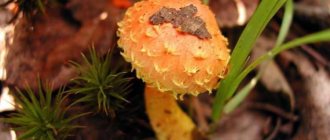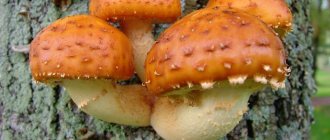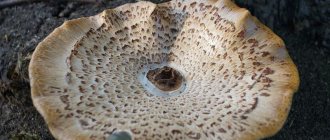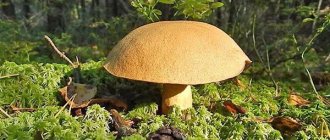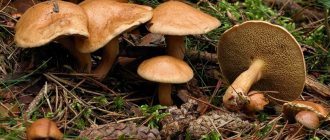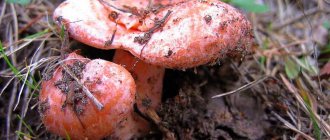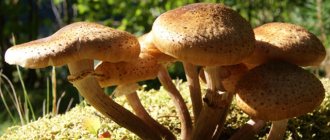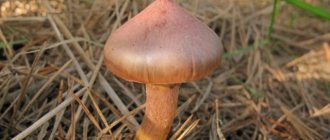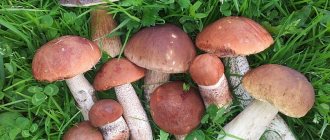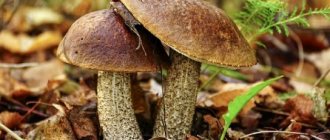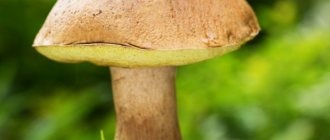Scales (foliota, royal honey fungus, willow) are mushrooms of the strophariaceae family. These bright “prickly” mushrooms decorate the autumn forest. In our country, it is not customary to collect and eat foliots, but in Japan and China they are cultivated on an industrial scale.
These mushrooms are mostly inedible because their pulp has an unpleasant taste and odor. However, those types of mushrooms whose pulp is edible are valued by experienced mushroom pickers and are used by them along with real honey mushrooms.
Botanical description
Content:
- Botanical description
- Types of flakes
- Chemical composition
- Beneficial features
- Use in folk medicine
- Use in cooking
- conclusions
Mushrooms of the genus Squamos are cap-shaped. The caps are hemispherical in young specimens and almost flat in mature ones. Their surface, yellow-brown in color, has a distinctive recognizable feature - protruding scales. It is for this feature that the mushrooms got their name. The diameter of their caps ranges from 5 to 18 cm (depending on the type). The plates on the underside of the caps are thick, adherent, and of different shades of yellow or brown. Spore powder is orange. The pulp of foliota is brown in color, has a bitter taste and smell of radish. Most representatives of this genus are inedible, only a few species are conditionally edible. Mycologists did not find any poisonous specimens among the foliots.
The mushroom stems are tall (up to 12 cm), cylindrical, often narrowing at the base, and painted the same color as the caps. Closer to the cap there is a ring in the form of flakes; below the ring the legs are covered with scales.
These mushrooms grow everywhere on trees and stumps in deciduous forests, forest plantations, and parks. They bear fruit in July-November.
Flame fiery and early
Fire flake is an inedible agaric fungus that grows in clumps from mid-July to late September.
Its peak fruiting period is observed in August-September. Most often found on stumps and coniferous wood.
The mushroom cap is first hemispherical, and then convex-spread, with a diameter of about 10 cm. Its surface is dry, containing concentric zones composed of small scales. Painted bright yellow. The plates are narrow, adherent, first bright yellow and then brown.
The leg is round, solid inside, about 8 cm high and about 1 cm in diameter. It is smooth at the top and scaly at the bottom. It is painted orange-yellow at the cap, and rusty closer to the base. The stalk has a characteristic scaly ring. The pulp is thin, tender, soft in the cap, hard in the stem, yellow in color, with an unpleasant herring smell.
Fire flake is not dangerous to human health, but due to its low taste and unpleasant odor it is not eaten.
Early flake, or agrocybe early, is a rare, conditionally edible, agaric fungus that grows in groups from late May to mid-June. Places of distribution: forest edges, parks, vegetable gardens, rare shrubs, roadsides.
The mushroom cap is hemispherical, over time it becomes convex-spread with a small tubercle in the middle. Its diameter is about 8 cm. The surface of the cap is matte, dry, dirty yellow. By the end of the season it fades and becomes faded. The plates are frequent, adherent, white in young mushrooms, brownish-olive in mature ones. The leg is round, hollow inside, about 8 cm high and about 1 cm in diameter. Its surface is smooth, dry, matte, white-pubescent at the base, painted white, which acquires a brownish tint in the lower part. The stalk has a characteristic membranous ring. The pulp is thin, dense, white, with a pleasant mushroom aroma.
Early flake is eaten after preliminary soaking or boiling. It can be fried and pickled.
Types of flakes
The genus of scales has about 150 species, of which about 30 grow in the forests of Russia. The most common types are foliots: ordinary, golden, fiery, cinder, alder, gum-bearing, destructive, edible (hint).
Common scalyfoot
This is the most common type. Mushrooms of this type are also called fleecy, scaly, dry. They grow in colonies on the wood of living and rotten deciduous trees. The caps have a diameter of 6-10 cm; in young ones they are hemispherical in shape, in mature ones they are flat. The surface of the caps is pale yellow with pronounced orange-brown scales.
The leg is cylindrical, dense, rusty in color. Young specimens have a veil that breaks when ripe, forming a ring on their stem and flakes along the edges of the cap.
The pulp of this species is fleshy, white or yellow in color, although edible, it tastes bitter.
Golden scale (royal honey mushrooms)
The golden species is one of the largest representatives of foliots: the diameter of the cap can reach 18 cm. Their fruiting bodies are painted in a bright yellow, golden color. The surface of the cap is covered with mucus and small dark brown scales. In young specimens, the cap has a hemispherical shape with tucked edges; in adulthood, it has a saucer shape with a convex center.
The pulp of these foliots does not smell or taste bitter, so the mushroom is classified as edible.
Fire scale
This is an inedible species of foliot. Mushrooms of this species are smaller in size than ordinary or golden ones: the diameter of the caps does not exceed 7 cm. The caps are painted in reddish tones and covered with thick curled scales of a lighter color than the cap. The scales on the cap form a pattern of ovals. The pulp is fleshy, hard, yellow in color, becomes brown when broken, has an astringent bitter taste and an unpleasant odor, so it is not eaten. They bear fruit from mid-July to the end of September.
Cinder flake
Cinder flake is also called coal-loving. The caps of this species of mushrooms are often stained with soot and dirt, since their favorite places to grow are burnt trees and fireplaces. Soot, dust and dirt stick to the mucous surface of the caps, so the mushrooms quickly become dirty yellow or dirty brown. In young foliots, the caps are covered with a private veil; in mature ones, the remains of this veil are preserved in the form of a ring on the stem and along the edges of the cap. The legs are covered with small reddish scales. The pulp of these foliots is dense, hard, light yellow, and has no specific taste or smell. There is no information in the literature about the edibility of these mushrooms. They grow from August to October.
Alder scale
These foliots are also called alder moth. They are often found on stumps and alder or birch wood. The size of the firefly caps is small: does not exceed 5-6 cm. The color of the caps is yellow-orange, along their edge there are flake-like remains of a private blanket. The legs are curved and have a pronounced ring. Below the rings are fibrous, above the rings are smooth.
The pulp of the mushrooms is yellowish, dirty yellow, inedible. If eaten, moths can cause poisoning. They bear fruit in August-September.
Gum scale
These mushrooms are also called yellow-green because their fruiting bodies, covered with scales, range in color from light yellow to yellow-green. The diameter of the caps of gum-bearing foliots is 3-6 cm. The pulp is edible because it does not have the rare taste and smell specific to flakes.
They grow on old stumps and rotten wood of deciduous trees. They bear fruit in August-October.
Destroying scale
These mushrooms are often found on old and dry poplars, so their second name is foliota poplar or poplar. These fungi actively destroy the wood of the tree during their growth. The caps can reach 20 cm, are colored light brown or yellowish, and covered with white scales. The legs are thinned towards the apex and have swellings at the base. The legs match the caps in color and are also covered with scales.
The pulp of destructive foliots is inedible because it has an unpleasant odor and bitter taste. They bear fruit in August-November.
Edible scale
This type of foliot is industrial. Mushrooms of this species are cultivated on a large scale in Japan and China. Their second name is foliota or nameko honey fungus. Grown in rooms with high humidity - 90-95%. They grow in groups. The sizes of these mushrooms are small - no more than 2 cm in diameter. The color of the fruiting bodies is orange-brown, the surface is covered with thick, dense jelly-like mucus.
They have soft flesh, similar in taste and smell to real honey mushrooms. On the shelves of our stores you can often find pickled edible flakes made in China. Only the inscription on the jar says that it is honey mushrooms (the second name for edible scales). Pickled foliots differ from real honey mushrooms by their mucous marinade, which is due to the jelly-like coating of the caps of the latter.
Golden and common flake
Golden scale (Pholiota cerifera) is an edible mushroom.
Bright, rather fleshy caps 5-15 cm, initially hemispherical, then convex, bright yellow, then yellow-ocher, covered with thick rusty-ocher scales. In wet weather the caps are slimy. At first the plates are beige-yellow, then brownish-rusty. Then the plates become ocher or brown. The leg is scaly, the color of the cap, 5-15 cm long, 1-2 cm thick, with a disappearing ring under the cap. The flesh in the cap is whitish, with a pleasant taste and smell. The legs are not assembled.
Grows on birch trees and on the trunks and stumps of tree-like willows.
Found in large clumps from July to October.
Golden flake can be confused with the inedible common flake (Pholiota squarrosa) with a thin odor and large protruding scales.
Some mushroom pickers consider golden flakes boiled with salt to be the most delicious mushroom. It can be used for frying, hot salting and pickling.
Common scale mushroom (Pholiota squarrosa) is an inedible mushroom.
The caps are 6-8 cm, pale ocher or pale yellow, with numerous large protruding ocher-brown scales. The plates are thin, adherent or slightly descending, first yellowish-brown, then brownish-brown. The leg is heavily scaly, the color of the cap, 5-12 cm long, 1-2 cm thick, with a disappearing ring under the cap. The flesh in the cap is whitish, bitter, and has a faint rare odor.
As you can see in the photo, common scale grows on stumps, tree trunks, on the ground next to trees and stumps:
Found in large clumps from July to October.
The common flake can be confused with the edible golden flake, which has non-bitter flesh, a bright cap and pressed scales.
Chemical composition
The pulp of royal honey mushrooms (golden scale) contains the main nutrients:
- proteins - 2.2 g;
- fats - 1.2 g;
- carbohydrates - 5.6 g, of which 5.1 g are dietary fiber.
The low content of carbohydrate substances determines their low calorie content: only 22 kcal per 100 g of mushrooms.
In addition to nutrients, the pulp of these mushrooms contains many vitamins and minerals.
Vitamins and minerals
| Name | Content per 100 g of pulp, milligrams |
| Vitamin B1 (thiamine) | 0,02 |
| Vitamin B2 (riboflavin) | 0,38 |
| Vitamin PP (nicotinic acid) | 10,3 |
| Vitamin C (ascorbic acid) | 11,0 |
| Vitamin E (tocopherol) | 0,1 |
| Potassium | 400,0 |
| Calcium | 5,0 |
| Phosphorus | 45,0 |
| Magnesium | 20,0 |
| Sodium | 5,0 |
| Iron | 0,8 |
In terms of nutritional value, edible foliots belong to the very last (fourth) food category, that is, mushrooms of mediocre taste.
SCALE OR PHOLIOTA SQUARROSA
This is one of the most common foliots in the genus, otherwise they are called dry, scaly, fleecy. They grow mainly on wood.
COMMON SCALE OR PHOLIOTA SQUARROSA
The veil, which we are accustomed to seeing on the folio of this species, is characteristic mainly of newly grown specimens, which later forms a distinctive skirt on their stem and looks like a fleecy scale on the edge of the cap.
External description: sometimes mature mushrooms reach a cap diameter of 20 cm, but for the most part the diameter of this representative is 5–12 cm. Mature mushrooms have a hemispherical or conical cap, then it becomes flat-convex or protruding (highly convex) in shape. The slimy surface has bright yellow dry scales. They taste bitter, but are edible. When broken, the pulp has a whitish or yellowish color.
Beneficial features
The pulp of royal honey mushrooms is good for health, because with its low calorie content it contains the entire spectrum of essential amino acids, and in terms of the amount of phosphorus and calcium it is comparable even to fish fillet.
Due to the presence of iron and magnesium in the pulp, these mushrooms participate in the processes of hematopoiesis, normalize the conduction of impulses along nerve fibers, influence the synthesis of proteins in the human body and are catalysts for various chemical reactions.
Substances exhibiting bactericidal and antifungal effects were found in golden, gum-bearing and edible foliots. The mucus covering the surface of the fruiting bodies of golden and edible scales has the following properties:
- stimulate cerebral circulation;
- increase immunity;
- relieve fatigue;
- restore vitality.
The flakes contain squarrosidine, a unique compound that inhibits the enzyme xanthine oxidase. The enzyme xanthine oxidase promotes the crystallization of uric acid in the joints, kidneys and body tissues. By inhibiting this enzyme, squarrosidine prevents the precipitation of urate salts and thus prevents painful attacks in people with gout. In clinical practice, drugs containing a xanthine oxidase inhibitor as an active substance are used to treat gout.
There is evidence that products made from these mushrooms can exhibit anti-cancer properties.
Possible harm
In addition to its beneficial properties, royal honey mushrooms can also have harmful effects on the human body. Their harm may be due to various factors:
- They belong to the inedible types of flakes.
- Collected in places with unfavorable environmental conditions (near landfills, cattle burial grounds, along roads, in industrial zones).
- They are overripe or wormy.
Eating edible types of flakes is contraindicated in case of individual intolerance and allergies.
With gastritis, pancreatitis, cholecystitis and kidney disorders, taking foliot in food can cause an exacerbation.
Children's age, pregnancy and breastfeeding are also absolute contraindications to eating foliot.
It is strictly forbidden to simultaneously consume royal honey mushrooms and alcoholic beverages. It has been scientifically established that when they are taken simultaneously, disulfiram-like (coprine) syndrome develops.
This syndrome manifests itself in the form of symptoms of acute intoxication with intermediate breakdown products of alcohol:
- rush of blood to the face;
- tinnitus;
- nausea and vomiting;
- abdominal pain;
- increased body temperature;
- rapid heartbeat;
- difficulty breathing;
- panic state.
In severe cases, collapsed states, coma or respiratory arrest may develop.
The pulp of these mushrooms also contains meconic acid, which is a derivative of opium. Therefore, in some cases, when royal honey mushrooms are consumed without prior boiling, psychedelic states may develop, accompanied by auditory and visual hallucinations.
Flake inedible
The vast majority of species of the genus flake belong to inedible mushrooms, although not all of them are truly poisonous. Nevertheless, we consider it appropriate to give a brief description of one species of inedible scales.
While most mushrooms of this family, unsuitable for food, received their status only because of their bitter taste, alder flake also has a slight toxic effect, which makes it truly dangerous.
We were unable to find a detailed description of the effect produced on the human body when consuming this mushroom, but it is widely noted that alder can cause food poisoning. Fortunately, even if you picked these particular mushrooms by mistake, they can be immediately identified by their unpleasant bitter taste.
However, it is still better to determine the species of mushrooms not in a plate, but in the forest. Well, for this it is better to carefully study the description and photo of alder flake. The problem here is that this mushroom is often very similar to ordinary mushrooms, which misleads inexperienced mushroom pickers.
It should be noted right away that the alder flake is not at all similar to other flakes, since the flakes themselves are extremely hard to see on it. The cap is small, up to 6 cm in diameter. The length of the stem is usually slightly greater than the diameter of the cap. The color of the cap is lemon yellow to pale brown, the stem is either the same color or darker.
Grows in dense groups from late August until cold weather. Prefers deciduous forests, especially loves fallen alder and birch trunks. Alder scale never grows near coniferous trees.
Use in folk medicine
Medicinal products (decoctions, infusions, tinctures) are prepared from foliots, which are used by traditional healers in the treatment of diseases of the cardiovascular system (atherosclerosis, arterial hypertension, varicose veins, thrombophlebitis). Iron and magnesium foliot help increase hemoglobin levels, so introducing these mushrooms into the diet will be useful for anemia and thyroid diseases.
Thanks to the large amount of fiber in the pulp, royal honey mushrooms prevent constipation. The presence of squarrosidine in the pulp of royal mushrooms makes them an indispensable food for people suffering from gout. Moth preparations are used in folk medicine as an emetic and laxative.
Due to its low calorie content, royal mushrooms are included in the diet of diabetics, vegetarians and people on a diet. It has been scientifically proven that fresh golden foliot extract inhibits the growth of Ehrlich carcinoma and sarcoma-180 in laboratory mice.
Where they grow, in what forests and how to collect
The usual habitat of the royal honey mushroom is deciduous and mixed forests. The mushroom is demanding of light, so it develops better on trees that provide minimal shade. Most often it is found on a willow tree, for which it was dubbed the willow tree. In rare cases, small colonies of fungi can be found on aspen or birch. The main difference from the same honey mushroom is the choice of place for growth. Fungi develop on living tree trunks or stumps, and not on fallen or scorched ones.
The golden scale prefers the temperate zone of the northern hemisphere, where Western Europe and central Russia are located. Mushroom pickers often come across willow trees in Karelia, the Urals, Siberia and the Far East. The peak of fruiting occurs in mid-autumn, namely the end of September - November.
Young mushrooms appear already in the last ten days of July. Fans of “silent hunting” often confuse them with summer honey mushrooms due to their appearance. Collecting royal mushrooms is no different from other types of mushrooms. They are carefully cut with a sharp knife, slightly retreating from the base of the leg.
Use in cooking
Only ordinary, golden, gum-bearing foliots and nameko honey mushrooms are used in cooking, because they have pulp with a pleasant smell and a typical mushroom taste, similar to the taste of real honey mushrooms.
These mushrooms can be prepared in different ways:
- add to soups, main courses, baking fillings, sauces and salads;
- fry;
- marinate;
- salt.
It is not customary to dry the flakes.
You should not prepare fresh foliots: they can cause dyspeptic symptoms. Before cooking, royal honey mushrooms must be boiled to avoid these digestive problems. The mushroom broth must be drained.
You can eat the entire fruiting body of the mushroom, but experienced chefs recommend using the caps for hot dishes, and the whole body for pickles and pickling.
Scale - photo and description
A typical representative of the genus is fleecy or ordinary scale, which is used to describe the general description of mushrooms of this family. All other species are identified by their differences from it.
All scales are characterized by a hat-footed body shape. Almost all of them are medium or large sized agaric mushrooms.
The cap has the shape of a hemisphere or bell; in old mushrooms it is flat-spread. The surface can be either dry or slimy, and is almost always covered with thick, clearly visible scales.
The leg tends to be cylindrical and is also often covered with scales. In most species, the stem is very fibrous and tough, which is why even in edible mushrooms it is not used for food.
Now let's look at what edible mushrooms of this genus look like:
- The scales are golden. Medium sized mushroom. The cap is on average 10-12 cm, the color is bright yellow, sometimes with a greenish tint. The leg is long (up to 10 cm) and clearly visible. Usually the same color as the cap, or lighter. If the mushroom grows from a vertical tree trunk, the stem will have a curved shape. The scales are slightly or much darker than the mushroom itself. Grows in dense groups on dead deciduous wood, sometimes on diseased but living trees.
- Edible scale, or nameko honey fungus. Small mushrooms that look very similar to honey mushrooms. The size of the cap rarely exceeds 4-5 cm, but the legs are quite long (8-10 cm). The color of the caps is light brown, the legs are always noticeably lighter. The caps are covered with a layer of mucus with barely visible scales. Like honey mushrooms, these mushrooms also grow in large “families” on stumps and dead wood of broad-leaved species.
- Upland scale. The size of the cap rarely exceeds 7-8 cm in diameter. Color ranges from golden yellow to ocher brown. The edges of the cap and the stem (up to 8 cm in length) are always a little lighter. It grows in small groups on pine litter near the roots or trunk, sometimes found on dead wood and stumps.
- The scale is ordinary, or fleecy. Medium sized mushroom. The diameter of the cap is usually 10-12 cm, although sometimes it can reach 20 cm. The stem, depending on the growing conditions, can reach from 5 to 20 cm in length. Also completely covered with scales. A fairly widespread mushroom that grows on any wood (living, dead, deciduous, coniferous).
